Doors Plus TV
Solid Core Internal Doors: Elevating the Look and Feel of Your Home’s Interiors
Are your internal doors just doing the bare minimum? It’s time to open the door to something better!
Solid core internal doors don’t simply separate rooms—they can completely change how your home looks, feels, functions, and even sounds.
What makes these doors a solid choice?
Let’s find out!
What Are Solid Core Internal Doors?
Solid core internal doors have a dense, solid material at their centre, usually engineered wood fibre, MDF (medium-density fibreboard), or a composite (a mix of materials, like wood fibres combined with resin or other binders). Their exterior is a veneer, laminate, or painted surface.
These doors are heavier and sturdier than standard doors, giving you better sound insulation, durability, and a more premium feel.
https://www.youtube.com/watch?v=m6tL_lGH9nk
Benefits of Solid Core Internal Doors
Solid core internal doors are
1. Durable. Handling daily use without denting, cracking, or warping.
2. Long-Lasting. Withstanding long-term wear and tear better than lighter alternatives.
3. Functional. Operating smoothly, with better weight and balance.
4. Sound Insulating. The dense core helps block sound waves, reducing noise transfer between rooms.
5. Visually Refined. Offering a more quality look that suits various interior styles, like modern, minimalist, classic, and Hamptons.
6. Sustainable. Some use responsibly sourced materials or recycled content, reducing environmental impact.
Where to Use Solid Core Internal Doors
• Bedrooms: Block out noise for a quieter, more restful space.
• Bathrooms: Add privacy.
• Home Offices: Reduce outside noise and limit distractions while you work.
• Living or Media Rooms: Contain sound from movies, music, and video games.
• Laundries: Keep the sound of washing machines and dryers from spilling into other areas.
• Hallway Doors: Create better separation between zones, especially in open-plan layouts.
Why Choose Solid Core Internal Doors Over Hollow Core Doors?
The solid core of solid core internal doors makes them better at blocking sound and feel more substantial.
Hollow core doors look similar on the outside but are mostly filled with air or a cardboard structure inside. While lightweight, cheaper, and easier to install, they don’t offer the same strength or sound reduction.
Choosing the Right Internal Solid Core Door
Think about
• Budget: Solid core doors cost more than hollow options but less than solid timber. Decide how many doors you’re replacing and where you want to invest more, like bedrooms or high-traffic areas.
• Purpose: Want more quiet in a study or nursery? Go for options with acoustic seals or higher sound ratings. Need privacy in a bathroom? Pick doors with a lockable handle.
• Style: Choose a door design that suits your interior look, such as panelled, flush, shaker-style, or something more decorative. A simple design works well across most home styles, while bolder options make a statement.
• Configuration:
o Material: MDF and composite cores are less likely to warp, while engineered wood fibre cores are strong and good at sound blocking.
o Finish: Decide if you want a painted door, woodgrain veneer, or raw surface that can be stained.
o Hardware: Choose hardware that complements the style of the door and the room it’s in, e.g., matte black for a modern look or brass for a classic touch.
FAQs About Solid Core Internal Doors
What’s the Difference Between a Solid Door and a Solid Core Door?
A solid door is made entirely of timber, while a solid core door features an engineered wood or composite core, such as MDF or particleboard, encased in a wood veneer or laminate. This design provides similar weight and sound insulation to solid wood doors but at a more affordable price.
How Much Does It Cost To Install a Solid Core Interior Door?
The cost of installing an internal solid core door varies based on material, hardware, and labour.
Generally, doors can cost $90 to $300, with installation costing $100 to $350.
Where in the Home Should I Install Solid Core Internal Doors?
Internal solid core doors are ideal anywhere you want better noise control and added privacy: bedrooms, bathrooms, home offices, living rooms, and laundries.
Elevate Your Home with Stylish and Durable Solid Core Internal Doors
Step up your style and shut out the noise with Doors Plus solid core internal doors!
Explore our stunning range online today. Then, visit your nearest Doors Plus showroom for a free measure and quote.
We’ll help you find the perfect internal doors with “No Fuss!”
How Do You Remove a Sliding Glass Door? A Step-by-Step Guide
Is a sliding door at your place looking a little tired? Or does it easily get jammed or come off-track?
Whether upgrading to a new design, fixing a faulty roller, or doing routine maintenance, knowing how to remove a sliding glass door properly will save you time, stress, and money.
This isn’t a job you want to rush. These doors are heavy, fragile, and awkward to handle. If you don’t follow the right steps, you could end up with broken glass, a dented frame, or worse—an injury!
How do you remove a sliding glass door correctly? We’ll walk you through the process from start to finish, including what tools you need, how to safely remove the door, and handy tips to make the job easier.
https://www.youtube.com/watch?v=at69cLokRgc&pp=0gcJCYUJAYcqIYzv
Tools You’ll Need to Remove a Sliding Glass Door
• Phillips-head and flathead screwdrivers
• Power drill (instead of screwdrivers)
• Pry bar
• Putty knife
• Utility (Stanley) knife
• Utility gloves
• Safety glasses
• Masking tape (to keep the glass from shifting or shattering)
• Glass suction cups (for handling the glass)
• Blanket (to rest the door panels on)
• Drop sheet (to protect the floor)
• Helper (most sliding doors are too bulky to handle solo)
Removing the Sliding Glass Door and Frame
Step 1: Prepare the Area
Clear the space around the door of curtains, blinds, furniture, rugs, and decor that might get in the way.
Apply masking tape in a crisscross pattern from edge to edge of the sliding door glass panel to help hold the glass together if it cracks during removal.
Lay a drop cloth on the floor inside the door to protect your floor from scratches. Also, lay a blanket on the floor nearby to place the glass panels on once they’re out.
Step 2: Remove the Sliding Door Panel from the Tracks
Now, how to remove the sliding door from the tracks?
Open the door about halfway. Look along the bottom inner edge of the door panel, just above the inner track. Most sliding doors have adjustment screws hidden behind small caps or holes near the base on either side. These screws control how high or low the door sits on its rollers.
Use a screwdriver or drill to loosen these screws just enough to lower the rollers and give you more clearance to lift the panel out of the track.
Step 3: Detach the Sliding Door Panel from the Door Frame
Hold both sides of the sliding panel firmly. Carefully lift it upwards into the top track. Once the bottom edge clears the bottom track, tilt the panel towards you and slowly lower it out.
Have someone help if the door feels too heavy or awkward. Place the panel on the blanket you laid earlier.
Step 4: Remove the Fixed Glass Panel (if Applicable)
Older-style sliding doors or those designed for easy replacement may have a removable fixed glass panel. If yours has a fixed panel, you’ll have better access to it now that you’ve removed the sliding panel.
Check for a small screw-secured metal bracket at the top or side of the fixed panel that holds it in place. Remove any screws securing this bracket and take it off.
If any silicone or adhesive also holds the panel in place, use a utility knife to cut through this.
You may need to gently pry the panel away from where it meets the door frame using a putty knife or pry bar. Start from the bottom corner and work slowly to avoid bending the frame.
When the panel is loose, slide it towards the centre opening to lift it upwards, tilt it out, and set it aside on the blanket. This panel can be as heavy as the sliding panel, so get someone to help you again.
Step 5: Remove the Door Frame
Once both glass panels are out, you can remove the frame if you’re replacing the entire door unit. If the fixed glass panel is permanently built into the frame, you’ll need to remove the frame with the glass in place.
Check around the edges of the frame for any screws securing the frame to the wall or floor. Use a screwdriver or drill to remove them.
If the frame is sealed with silicone or adhesive, use a utility knife to cut along the edges where it meets the wall to loosen it.
In most cases, the tracks are part of the frame and don’t need to be removed separately—they’ll come out with the frame as one unit. Only remove the tracks if they’re screwed in separately or if you’re having trouble getting the entire frame out.
Insert a pry bar behind the side or bottom section of the frame and gently lever it away from the wall. Work slowly and evenly around the frame to avoid bending or cracking it, especially if you plan to reuse it.
When the frame is free, carefully lift it out of the opening. Some frames come out in one piece, while others may need to be removed in sections.
Once again, enlist the help of someone, as larger or older aluminium frames can be heavier than expected.
Step 6: Final Check and Inspection
Look for cracks, holes, water damage, or rotted timber around the opening where you removed the frame. Repair or reinforce as needed before installing anything new.
Scrape off any remaining silicone or adhesive with a putty knife.
Give the opening a good sweep or vacuum to remove dust and debris.
https://www.youtube.com/watch?v=L-C2DhsDEI4
Cleaning the Glass Door Panels
If you plan to reinstall or store the sliding door panels, now is a good time to clean them.
1. Use a soft brush or dry microfibre cloth to remove dust and dirt from the door’s edges, corners, and surfaces.
2. Spray both sides of the glass with a glass cleaner or a mix of vinegar and water. Wipe with a lint-free cloth or newspaper using circular motions.
Cleaning the Tracks and Frame
1. Use a handheld brush or a vacuum cleaner with a brush attachment to get rid of built-up dust and dirt from the tracks and frame.
2. Mix some mild dish soap with warm water. Dip a sponge or cloth into the mixture and clean all sides of the frame and tracks. You can use a narrow brush, old toothbrush, or cotton tip to get into tight areas of the tracks.
3. Dry everything well with a clean cloth to prevent water spots or rust (on metal frames), making sure no water is left in the corners or roller tracks.
4. If you’re reusing the tracks, check for any damage or wear. Apply a silicone-based lubricant to the clean track to help the door glide smoothly when reinstalled.
Tips for Safe and Efficient Sliding Glass Door Removal
• Get Help: Work with a partner to safely move heavy glass panels and the frame.
• Go Slow: Take your time and work carefully to avoid causing damage to the surrounding walls.
• Be Careful: Watch out for sharp edges on the frame and glass.
• Wear Safety Gear: Safety glasses and utility gloves will help protect you from injury.
• Use the Right Tools: Specialised suction cups will assist with securely handling glass panels.
• Stay Organised: Label removed parts, like screws and brackets, for easier reassembly if needed.
When to Consider Professional Help
Some sliding door removals are best left to the pros!
Call in a professional if
• You’re dealing with large or heavy doors that are difficult to move safely.
• The track or frame design is complex or built into the wall.
• There’s a risk of damaging surrounding walls or structures.
Professional installers have the right tools and know-how to do the job safely in less time and with less mess.
Doors Plus offers expert sliding door removal and installation services, so you can have your door replaced without the fuss!
Benefits of Upgrading Your Sliding Glass Door
Why upgrade your sliding door instead of simply repairing the old one?
A new door can offer more than just a fresh look.
• Better Energy Efficiency: Double-glazed glass will help keep your home comfortable year-round by reducing heat loss in winter and blocking heat in summer.
• Improved Security: Newer doors can have stronger locks and be made of tougher materials—such as Doors Plus Safe Glass™—which is extremely difficult to break and 500% stronger than regular glass.
• Smoother Operation: Updated track systems and hardware enable smoother operation and last longer.
FAQs about “How Do You Remove a Sliding Glass Door?”
Can I Remove a Sliding Glass Door Myself?
Yes, you can if the door is standard size and you have the right tools, safety gear, and a second person to help.
For larger or more complex doors, it’s best to call a professional.
How Heavy Is a Sliding Glass Door?
The weight of a sliding glass door varies based on its size, glass type, and frame materials. Generally, standard residential sliding doors weigh between 30 and 80 kilograms per panel.
Larger doors, such as those with double glazing or commercial-grade materials, can be heavier, weighing up to 160 kilograms.
Do You Need To Remove the Entire Frame To Replace a Sliding Door?
If the new sliding door matches the existing frame and the frame is in good condition, you may be able to just replace the door panels.
Removing the whole frame will be necessary if the frame is damaged or incompatible with the new panels.
https://www.youtube.com/watch?v=JnZwCVR5ATg
Ready to Upgrade Your Sliding Glass Door? Let Doors Plus Help!
How do you remove a sliding glass door?
Just follow this guide!
But if you decide it’s a job best done by professionals, look no further than Doors Plus.
We have a wide range of high-quality, stylish sliding glass doors to suit any home. And with our free measure and quote, easy delivery, and expert installation, you can sit back while we take care of everything—from start to flawless finish.
Visit your nearest Doors Plus showroom today, and we’ll help you choose and install the perfect sliding glass door with “No Fuss!”
Exterior Doors With Windows: Maximising Natural Light and Enhancing Curb Appeal
Does your entryway feel dark and dull? An exterior door with a window is the simple upgrade your home needs!
These doors bring in natural light while looking fantastic, making your space feel brighter and more welcoming from the moment you step inside.
But does letting more light in through a window mean compromising security? Certainly not! An exterior door with a window still gives you the strength and security of a solid front door.
Let’s discuss these perks and more and look at popular window styles and door designs to find the best fit for your home.
Benefits of an Exterior Door With a Window
1. Natural Light: Letting in more sunlight can make your entryway feel warmer and more inviting and brighten up dark spots without needing to switch on lights during the day.
2. Curb Appeal: Doors with windows add a stylish touch to your home’s exterior. Whether it’s a modern design or something more classic, it can lift the whole look of your façade.
3. Increased Property Value: A good-looking, well-lit entry can boost the overall feel of your home, which can help bump up its value if you ever decide to sell.
4. Energy Efficiency: Many doors on the market come with double-glazed or insulated glass to keep the heat in during winter and out during summer. That means better comfort and lower power bills.
Design Options for Exterior Doors With Windows
Materials
• Timber: Natural-looking, perfect for classic and rustic style homes. Can be painted or stained. Needs regular care to handle sun and rain.
• Composite: Made from a mix of wood and plastic. Strong, long-lasting, low maintenance, and resists warping.
• Aluminium: Sleek and modern. Lightweight, durable, rust-free, and easy to maintain.
• Fibreglass: Looks like timber but doesn’t need as much maintenance. Tough and weather-resistant, ideal for coastal or harsh climates.
Glass Styles
• Clear: Full light and visibility.
• Frosted: Blurred finish for privacy while still letting in light.
• Textured: Patterns add style and soften visibility.
• Decorative: Stained or leadlight designs offer visual impact.
• Double-glazed: Insulated for better energy efficiency and noise control.
• Insulsafe™: Triple-glazed to provide a barrier to heat/cold transference, excellent noise reduction properties, and super strong thanks to an extra pane of Doors Plus SafeGlass™.
Customisation
At Doors Plus, you can customise your exterior door with a window to suit your home’s style and layout. Choose a full-length glass panel for maximum light or a smaller insert for added privacy. You can also decide where the window sits—towards the top, middle, or across the entire door.
To complete the look, you can choose from timber stains, painted finishes, or laminate options, depending on the material. There are also handles, locks, and hinges in different styles and finishes, like matte black, chrome, and brushed nickel. These small details help tie the door in with the rest of your home’s exterior and create a personalised finish.
Security Features To Consider
• Reinforced Glass: Doors Plus Safeglass™ is 500% stronger than standard glass, making it extremely hard to break. If broken with extreme force, it crumbles into small granules, not dangerous big shards.
• Multi-Point Locking Systems: Secure the door at multiple points for better protection against forced entry.
• Weather-Resistant Seals: Help prevent damage from wind, rain, and heat while maintaining a tight, secure fit.
FAQs about Exterior Doors With Windows
Is It Safe To Have a Window in Your Front Door?
Yes, if you choose a front door with reinforced or double-glazed glass, strong locks, and secure frame materials.
Do Exterior Doors With Windows Let In Cold Air?
Not if they’re properly sealed with weather seals and made with energy-efficient insulated or double-glazed glass to keep the cold out and the warmth in.
Can I Customise the Size of the Window in My Door?
You can customise the size and placement of the window in your door to suit your style and privacy needs. Doors Plus offers a range of options to help you create the look you want.
What Materials Are Best for Exterior Doors With Windows?
Composite and fibreglass exterior doors with windows are low maintenance and weather-resistant, while timber is strong and durable with proper care, and aluminium is lightweight and rust-resistant.
Brighten Your Home with Stylish Exterior Doors from Doors Plus
See your home in a whole new light with an exterior door that’s as secure as it is stylish.
Visit your nearest Doors Plus showroom today for a free measure and quote, and let us help you find the perfect exterior door with a window—“No Fuss!”
Bifold Laundry Doors: Small Space, Big Style
Don’t let a small laundry room cramp your style!
Bifold laundry doors are the perfect solution for getting the most out of a small laundry space without giving up on style.
These clever doors fold neatly to the side, creating a sense of openness and flow.
Doors Plus has a fantastic range of bifold doors to suit every laundry room, so let’s see how they can make a big impact in your small space.
Why Choose Bifold Doors for Your Laundry Area?
Bifold laundry doors are a super popular choice for modern homes for many reasons.
• Space Efficiency: Laundry rooms are usually not the biggest spaces in the house.
Laundry bifold doors are great for maximising floor space because they fold neatly to the side, eliminating the need for swing clearance that traditional doors need.
• Easy Access: No more struggling to squeeze past a half-open door with a laundry basket!
Bifold doors provide easy access to your laundry area, making it a breeze to load and unload your washing machine.
• Noise Reduction: If your laundry room is located near living areas, bifold doors can help to muffle the sound of that noisy washing machine or dryer.
• Style Boost: Who says laundry rooms can’t be stylish?
Bifold laundry doors come in a variety of designs and finishes to match your home’s style.
• Improved Air Flow: Good ventilation is a must in a laundry room to prevent moisture build-up.
Laundry bifold doors can help improve airflow, keeping your laundry fresh and dry.
Materials and Styles for Bifold Laundry Doors
Bifold laundry doors come in a tonne of materials and styles to suit all tastes and budgets.
• Timber: Natural, durable, and versatile, timber bifold doors add warmth and elegance to your laundry room.
• Glass Panels: For a modern and sleek look, look for bifold doors with frosted or clear glass panels.
They allow natural light to filter in while still maintaining privacy.
• Aluminium: Lightweight and low-maintenance, aluminium laundry bifold doors are a practical choice for busy households.
Check out our Zone Living range for the most flexibility and control over your bifold laundry doors.
Our Shaker Zone Living range of timber bifold doors comes in 2,4 or 6-panel options. These multi-folding doors’ simplicity and clean lines will make any laundry look and function like new!
Choosing the Right Bifold Door Style
With so many options out there, how do you choose the right bifold door for your laundry room?
Here are a few things to consider:
• Style: Think about the overall style of your laundry room and choose a bifold door that matches.
Do you prefer a traditional or contemporary look?
• Material and Finish: Consider the material and finish of the door.
Do you want the warmth of timber, the sleekness of aluminium, or the modern look of glass?
• Durability and Cleaning: Laundry rooms can be messy places, so choose a bifold door that is tough and easy to keep clean.
• Size and Opening: Measure your laundry room carefully to ensure the bifold door will fit comfortably.
Consider the opening height and the width of the door when folded and how many panel options you’ll need.
• Functionality: Do you need the door to fold inwards or outwards?
Think about how you will use the space and choose a door that makes the most of its functionality.
How To Maximise Functionality With Bifold Laundry Doors
There are a few extra features that can really boost the overall functionality of your bifold laundry doors.
• Soft-Close Mechanisms: Say goodbye to slamming doors!
Soft-close mechanisms guarantee smooth and quiet closing.
• Ventilation Features: Louvered or slatted designs can improve airflow in your laundry room, reducing moisture and humidity.
• Energy Efficiency: If your laundry room is prone to temperature fluctuations, you’ll want insulated bifold doors to help keep the stuffy air in.
Installing Bifold Laundry Doors: DIY or Professional Help?
Installing bifold laundry doors can be a DIY project if you’re handy with tools and have some experience with basic carpentry.
For standard-sized doors, you’ll need basic tools like a drill, screwdriver, level, and measuring tape.
Follow the manufacturer’s instructions carefully, and take your time to double-check measurements so you’ll get a precise fit.
However, for non-standard spaces or if you want multiple panel options, professional installation is highly recommended.
Doors Plus offers professional installation services, ensuring your bifold laundry doors are fitted perfectly and operate smoothly.
It’s a hassle-free option for amazing results.
Why Choose Doors Plus for Bifold Laundry Doors?
Doors Plus is your source for high-quality bifold laundry doors.
We offer a wide range of styles, materials, and finishes to suit every need and every budget.
Our “No Fuss” approach means you can relax and enjoy the process, from selection to installation.
We offer:
• Customisation Options: Choose from a variety of materials, finishes, and sizes to create the perfect bifold laundry doors for your home.
• Free Measure and Quote: Our expert team will visit your home to take accurate measurements and provide a free, no-obligation quote.
• Professional Installation: Our experienced installers will ensure your new laundry bifold doors are fitted perfectly and operate smoothly.
• Delivery: We offer convenient delivery options to get your new doors to your doorstep.
FAQs About Bifold Laundry Doors
What Type of Door Is Best for a Laundry Room?
That’s a tough one to answer! The best type of door really depends on your needs and preferences.
Bifold laundry doors are a popular choice because they are space-saving, stylish, and functional.
They are suitable for compact laundry areas where space is limited.
How Can I Maximise My Small Laundry Room?
There are a few ways.
Choose slim, space-saving appliances, utilise vertical space with shelving and storage solutions, and use a light and bright colour scheme to create a sense of openness.
Installing bifold laundry doors will also free up valuable floor space and improve access to the laundry.
What Is the Purpose of a Bifold Door?
Bifold doors make the best use of limited space and provide easy access to areas where a traditional swinging door might not work.
They fold neatly to the side, making them perfect for compact spaces like laundry rooms, closets, and pantries.
They can also be used to create a sense of openness and flow between rooms or to divide larger spaces.
Upgrade Your Laundry Area With Stylish and Space-Saving Bifold Doors
Don’t let another laundry day go by in a cramped and cluttered space.
Upgrade your laundry room with stylish and space-saving bifold doors from Doors Plus.
Our friendly team will work with you to create a laundry space that’s beautiful and functional.
Visit our showroom or book a free measure and quote today, and let’s create a laundry that will make you actually look forward to doing the washing!

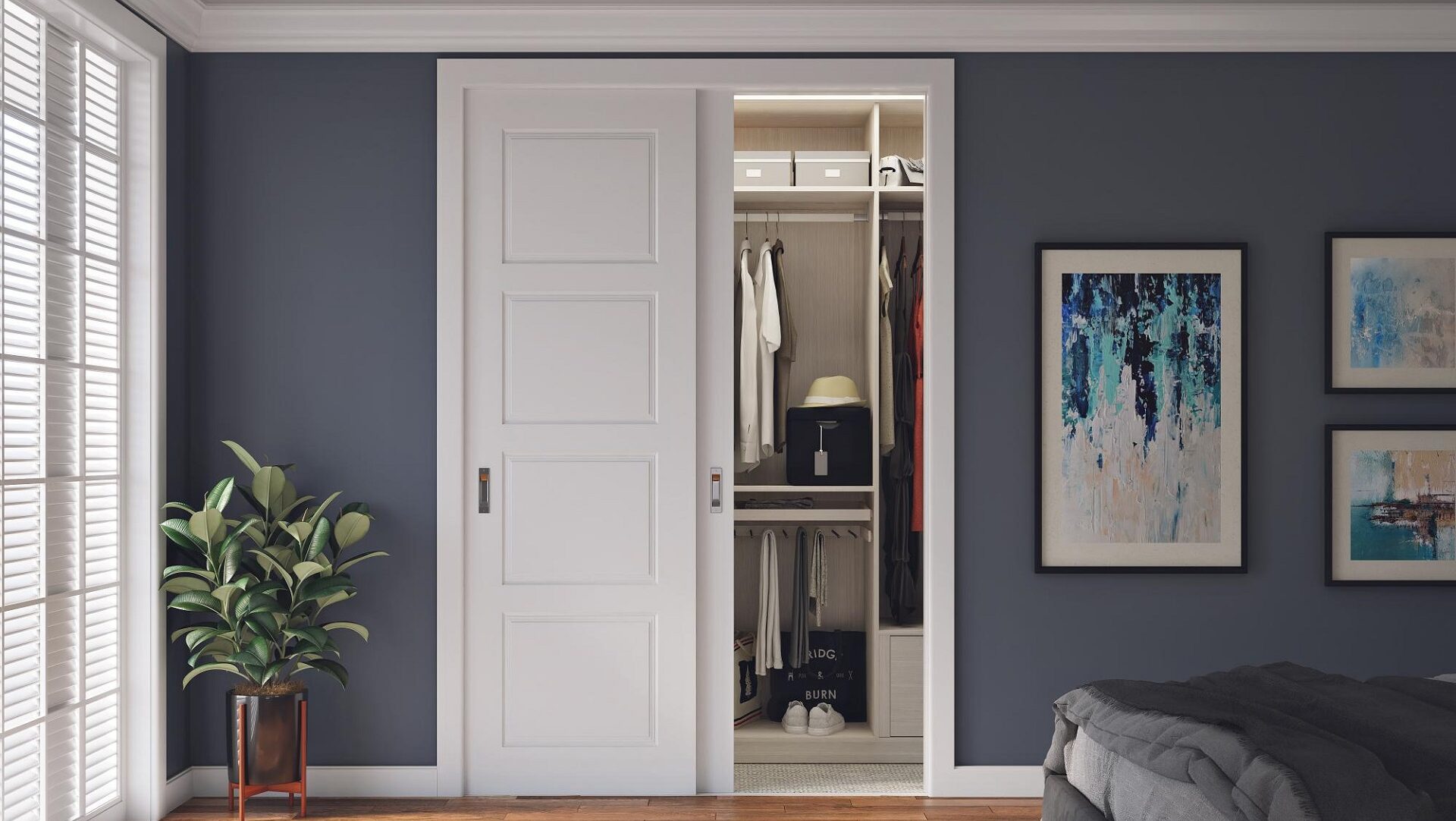
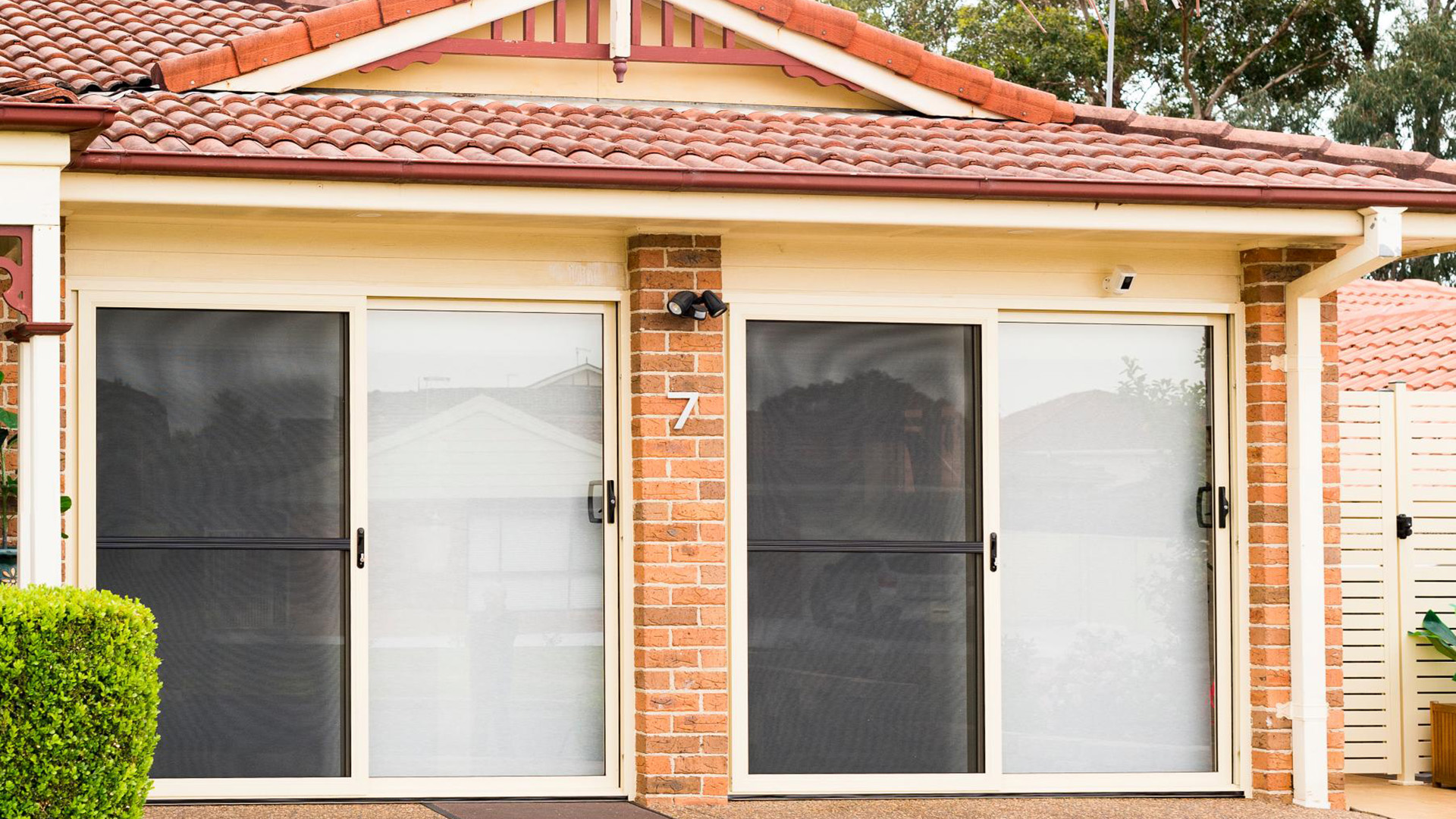
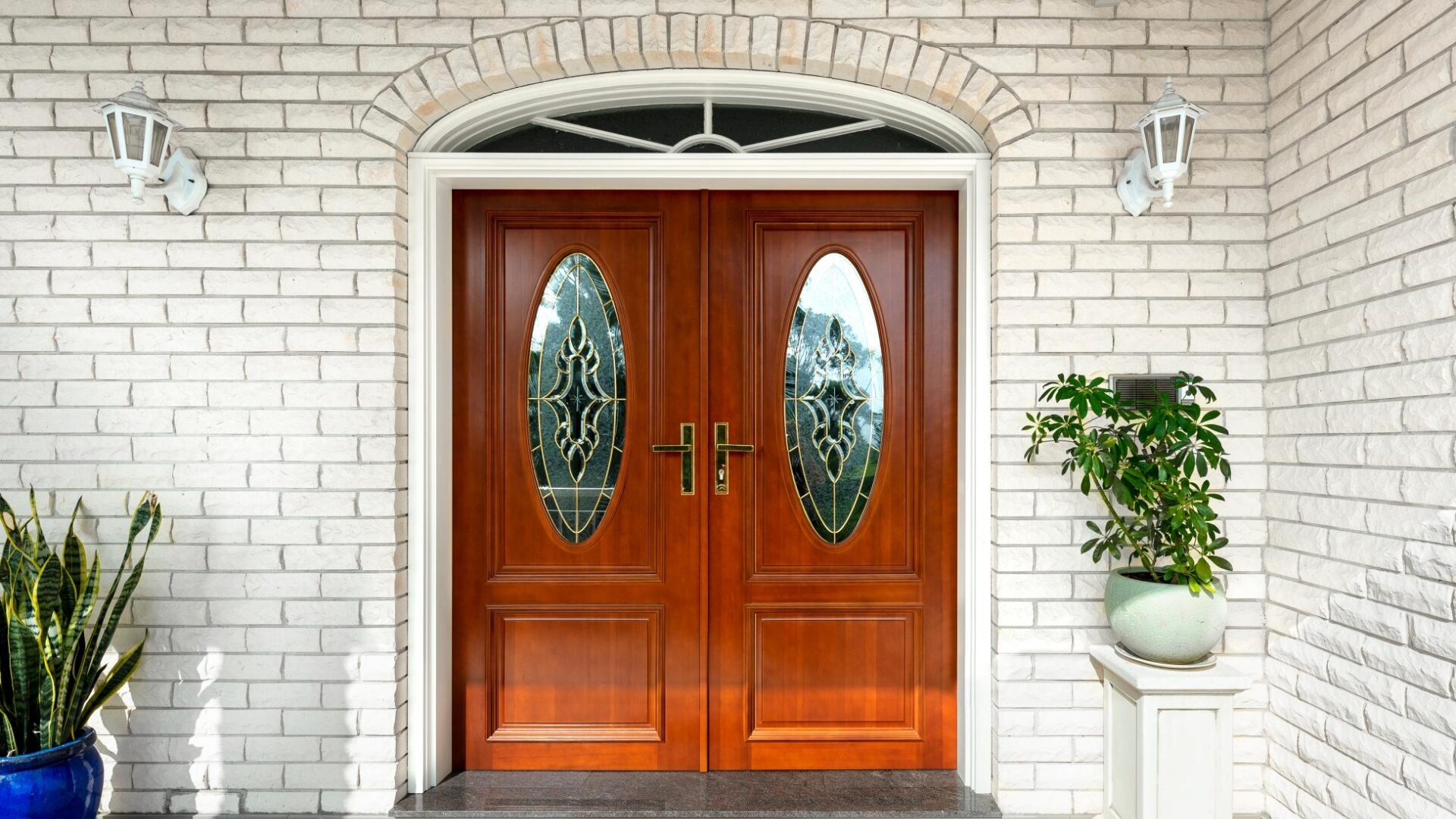

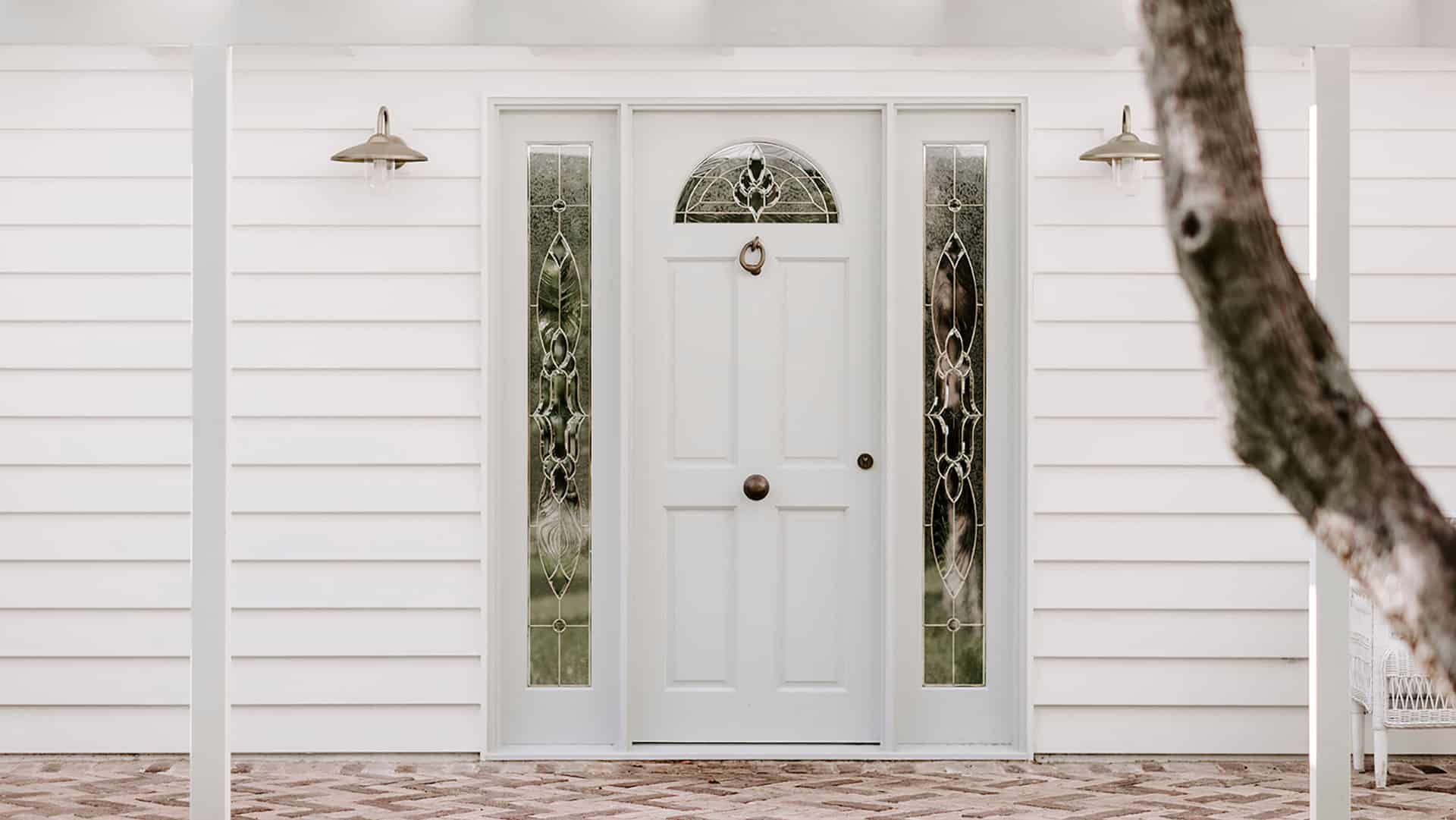
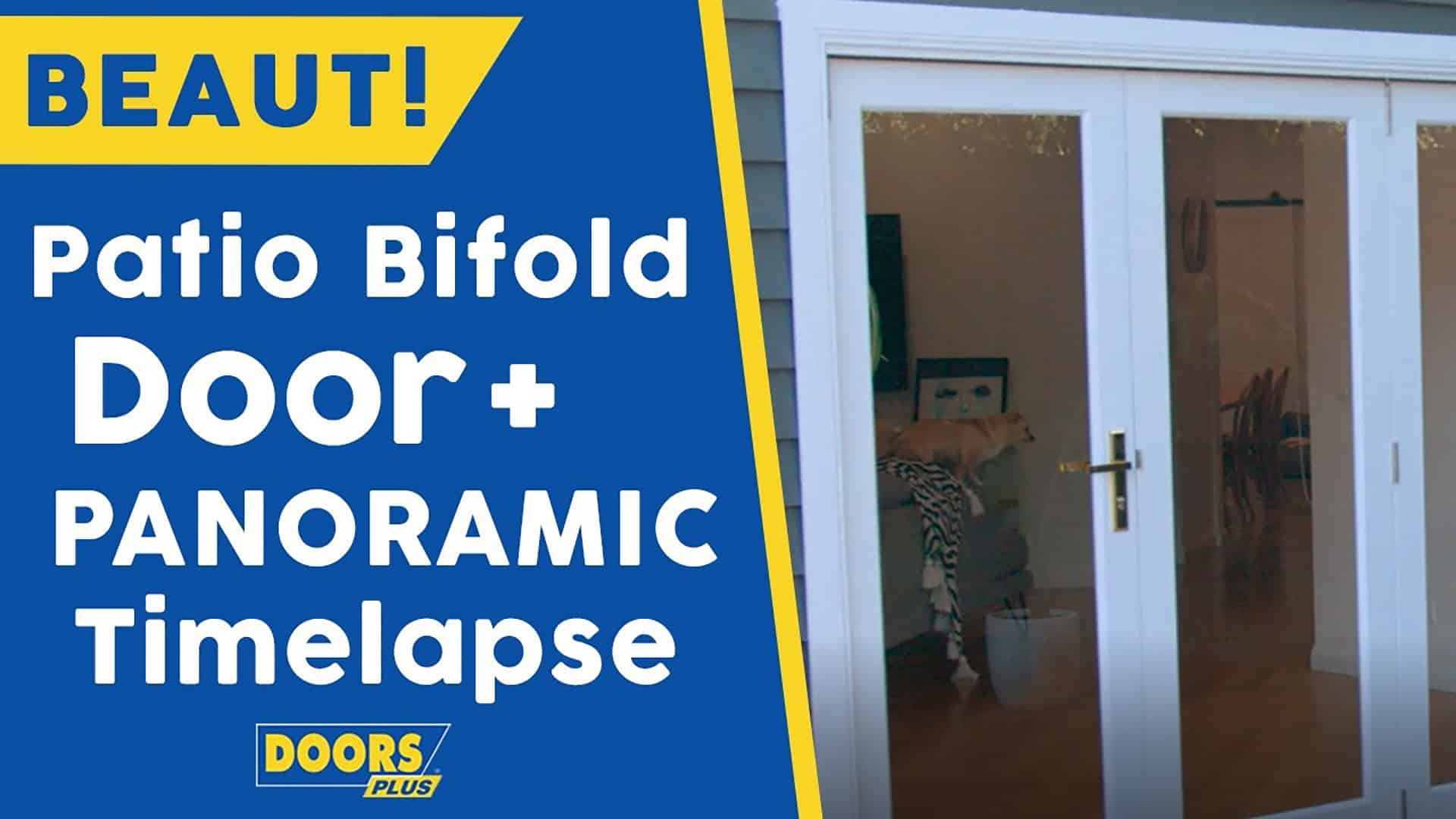
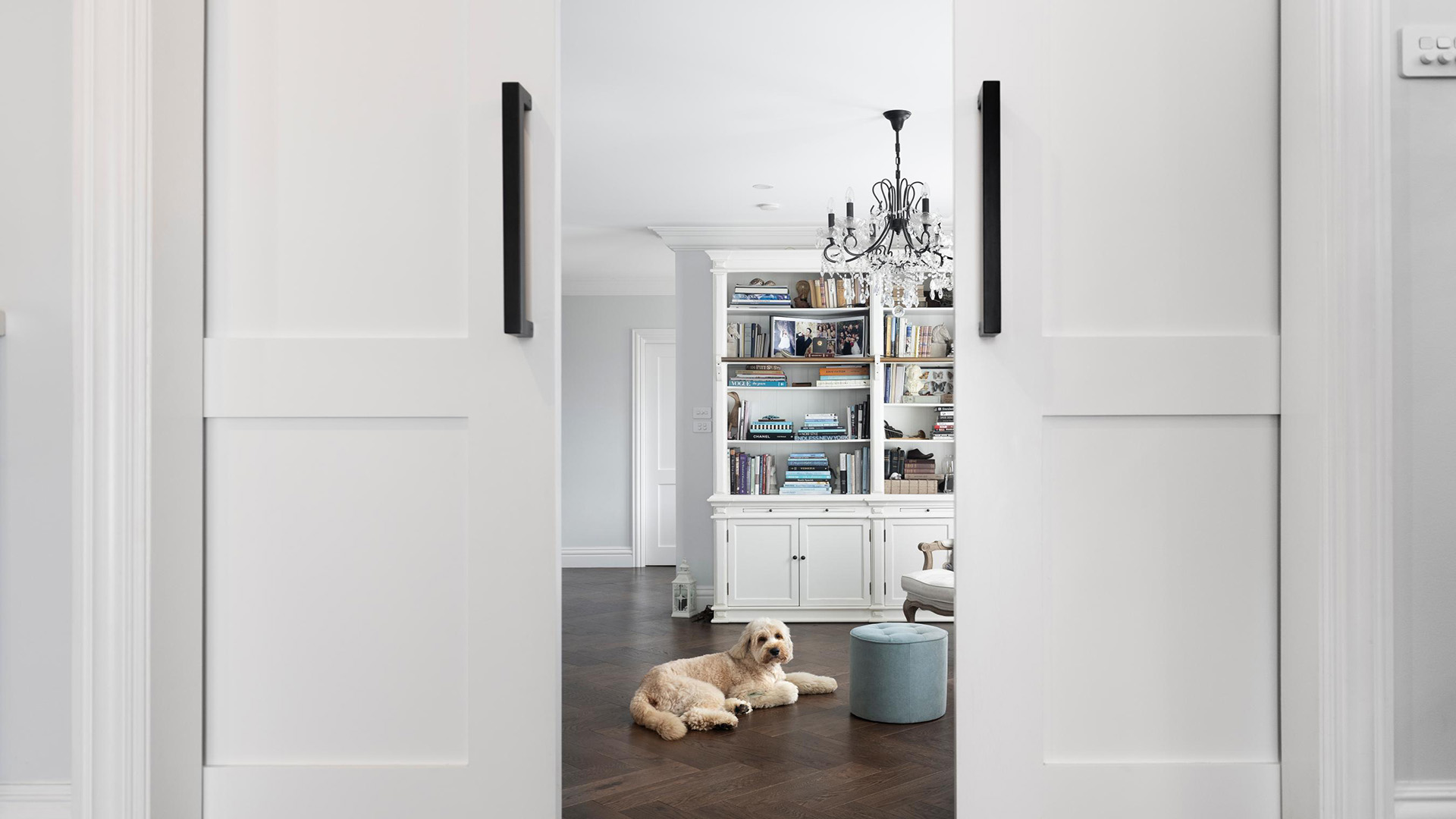
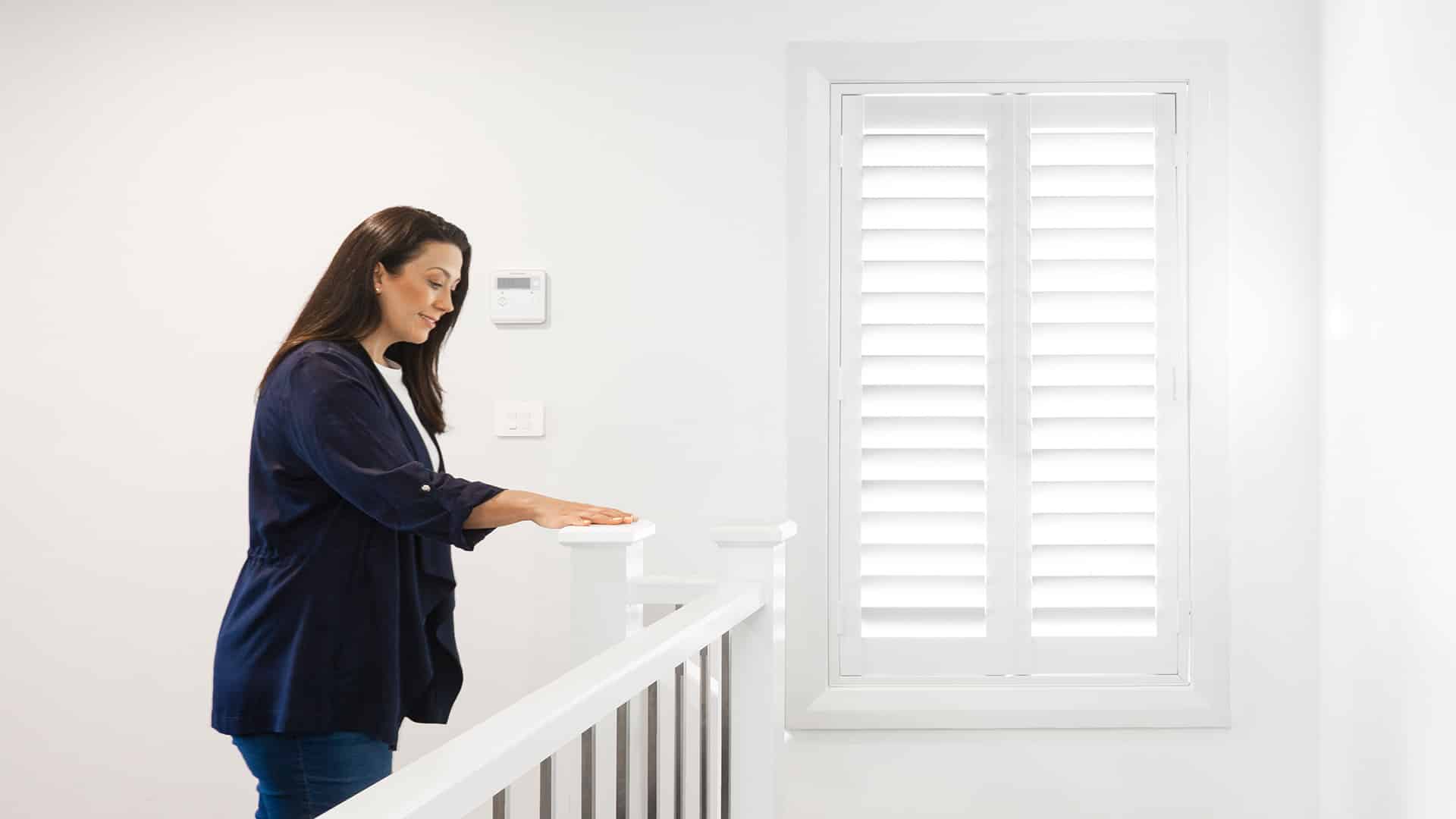

![Watch one of our skilled carpenters at work with this beautiful installation of a Glengary Barn Door leading into a bedroom.
@saritaholland
[barn door, barn doors, interior doors, doors plus]](https://www.doorsplus.com.au/wp-content/plugins/instagram-feed/img/placeholder.png)